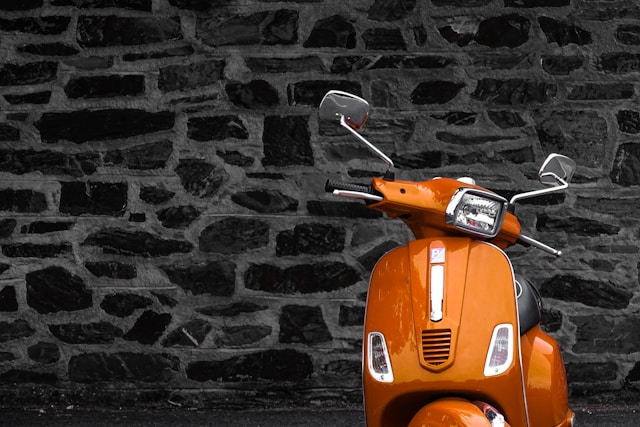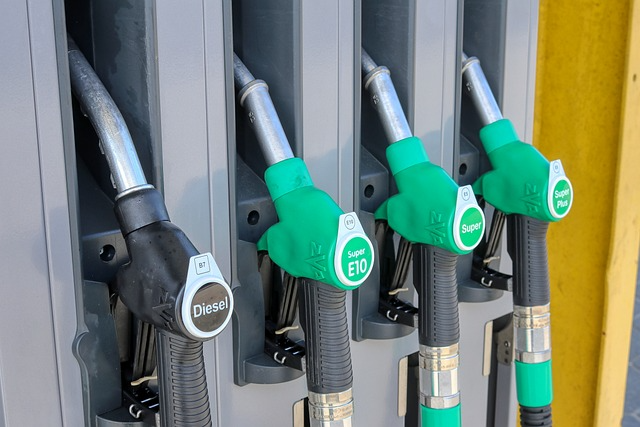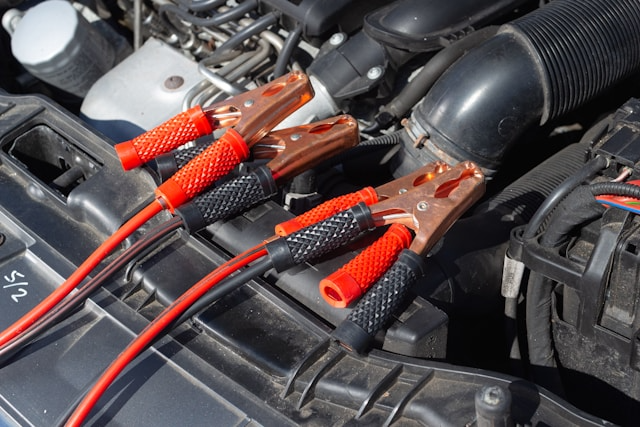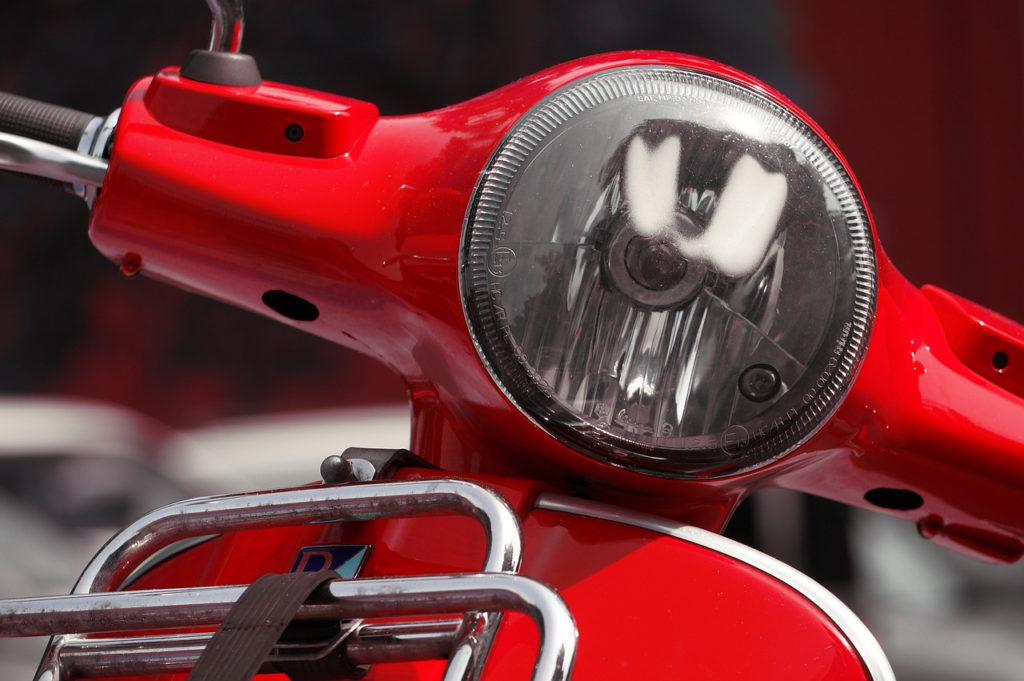For the experienced rider, kick-starting a scooter may seem to be child’s play, but for the amateurs of the two-wheeled world, it may seem intimidating. Relax! We’ve all been in such situations, and learning the basics is the first step toward zipping around confidently in the city on your trusty ride. If you’re wondering how to start your scooter, this guide has broken down everything you need to prepare or how to deal with it.
1. Know Your Scooter
Before you even hold your scooter, it’s important that you know about it. You can only be successful in starting your scooter if you know every part and component. So, you must spend some time to familiarize yourself with its components. When you know your scooter inside and out, it will make the entire process smoother. Here’s what you should know about:
Ignition switch: This is usually located near the handlebars.
Kickstand: Kickstand is the stand that holds your scooter upright when parked.
Throttle: Also known as an accelerator, it’s the handle you twist to control speed.
Brakes: These come in two types, front brake and rear brake levers which are located on the handlebars.
Kickstart lever (if applicable): The kickstart lever is found near the engine on some models.
Fuel valve (if applicable): Often under the seat or near the footrest.
Kill switch: This is a safety feature that stops the engine immediately.
These are some of the basic parts of a scooter, which once when identified, you’ll be all ready to get started.
2. Basic Steps to Start a Scooter
A. Starting an Electric Scooter
Electric starters make life easy. Here’s how to get your scooter going:
Insert the Key: Insert the key in the ignition switch and turn it to the ‘ON’ position, and you should hear a little click or see lights on the dashboard.
Check the Kill Switch: Make sure the kill switch is in the ‘RUN’ position. In case it’s in the ‘OFF’ position, that scooter won’t start.
Engage the Brake Handle: Squeeze and hold one of the brake levers (usually the left one). Most scooters will have this as a safety precaution.
Press the Electric Start Button: While holding the brake, press the electric start button also known as the starter switch, located on the right handlebar-most likely the brake should be released and the engine roars to life and if it does start it up so don’t worry-we’ll get to troubleshooting shortly.
B. Starting a Scooter with a Kickstart
Ignition might sound boring, but in actuality, it’s a very good technique in how to do kick-starting:
Insert Key: Insert the key to its own position.
Locate Kickstart Lever: Fold out the kickstart lever using your feet.
Position Yourself: Stand left of the scooter. Hold the handlebars using one hand as it grips the brake.
Kick-downwards: Use your foot to snap the lever down in a quick, forceful motion. You may have to repeat this a couple of times until the engine starts.
Push Forward: After the engine is started, push forward your scooter and use that throttle carefully to even out the idle speed.

3. Pre-Start Checklist
This quick checklist before turning your scooter saves you from any wear and tear and even ensures safety. Here are some of the checks:
Gas Level: If it’s a gas scooter, ensure that the tank has enough gas in it. You don’t want to be stranded in a quiet place alone for sure!
Oil Level: A low oil level can damage the scooter’s engine. Make sure your scooter has the right level.
Tires: Check proper inflation and visible defects. Worn-out tires can be dangerous to be ridden on the road.
Lights: Lights are the main components of a scooter that keep you safe on the road during nighttime. So, make sure all headlights, taillights, and indicators are working properly.
Brakes: Always check the brakes before hitting the streets. It’s important to check the brake lever operation.
Mirrors: Adjust them to allow a clearer vision of what’s behind you.4. Common Starting Issues and Solutions
Sometimes, despite your best efforts, your scooter refuses to start. Don’t stress—most issues are minor and easy to fix. Here are common problems and how to address them:
A. Dead Battery
If the battery is dead, the electrical start does not respond. Do the following:
- In case of an electric starter, try kick-start.
- Recharge or replace with a new battery.
- Keep a portable jump starter or jumper cables handy for emergencies.
B. Clogged Carburetor
A blocked carburetor is a common problem that could make your scooter engine refuse to start.
This usually happens when the scooter sits without use for a long period since old fuel gets degraded and leaves residues inside that prevent the carburetor from functioning well. Over time, this accumulation blocks the flow of fuel and makes the engine not function properly.
To deal with this problem,
- Put in a fuel additive that will clean the carburetor.
- If the problem does not go away or you suspect that some severe buildup has occurred, you will probably want to remove the carburetor to get it cleaned completely by hand.
This hands-on approach can ensure that your carburetor is returned to optimal condition.
C. Fuel Issues
Often, the culprit that causes a scooter to not start is low-quality or poor fuel. Deteriorated fuel, which does not possess the necessary potency to run an engine, may eventually give way to starting difficulties or the failure of the engine.
If there’s any problem in starting your scooter,
- Check if there is sufficient fuel in the tank, as running out of fuel is probably the most common problem that is overlooked.
- If it has a fuel valve, check whether it is in the open position to allow the fuel to flow into the engine.
- Old or stale fuel may cause your scooter not to start. Drain the tank and replace the old fuel with fresh premium gasoline.
D. Faulty Spark Plug
A common problem that can hinder the ignition process of your scooter’s engine is a worn or dirty spark plug. Over the years, spark plugs may accumulate with carbon deposits, wear down, or get damaged, thus preventing them from making the necessary spark for igniting the air-fuel mixture of the engine.
For this:
- Start by inspecting the spark plug carefully.
- Check it for cracks in the ceramic casing, electrode wear, and a buildup of black carbon deposits.
- Now clean it with a wire brush or a specialized spark plug cleaner to get rid of the deposits.
- It is it good practice to replace it with a new one.
Check regularly and maintain the spark plug for your scooter to keep it in top running condition.
E. Kill Switch or Brake Issues
Common instances of starting malfunctions probably arise from little things like forgetting to switch on the kill switch or not pulling the brake lever fully. The safety-prevention features prevent the scooter from being started, and when not set accurately, confuse us.
- Check if the kill switch is positioned correctly.
- Pull the brake lever all the way.
These are a couple of basic yet essential checks for troubleshooting whenever your scooter does not start.

4. Tips for Smooth Starts
Taking proactive care of your scooter is the key to enjoying a hassle-free riding experience. By following these tips, you’ll not only enhance your scooter’s performance but also ensure reliable starts and reduce the likelihood of breakdowns.
A. Warm-Up Time
Don’t take your vehicle for a drive immediately; before doing that, let the engine warm up for 1-2 minutes, especially when it’s cold. This allows the engine to warm up to its optimal operating temperature so that it runs smoothly and will also reduce wear on critical engine components.
B. Practice Makes Perfect
If your scooter has a kickstarter, then you really need to know how to use it properly. Spend a little time working out the kinks of the starting action, and you will learn to put just the right balance of force and speed behind it, making it that much easier to kick-start your scooter every time you want to use it.
D. Routine Maintenance
Scooters require maintenance to minimize the possibility of developing functional problems and to maximize performance. Regular servicing, or periodic check-ups such as changing of spark plug, cleaning the carburetor, and air filter replacement, can avoid starting problems and lengthen the life of your scooter.
E. Use High-Quality Fuel
Fuel quality does play a vital role in the performance of your scooter. Poor-quality fuel can lead to washing of the carburetors and reduced efficiency. So make sure that you fill up from trustworthy gas stations to avoid contaminants that can harm your engine at some point.
F. Keep Your Scooter Covered
If your scooter is parked for long, then it is a good idea to protect your scooter against rain, dust, and debris. These can eventually cause problems with starting due to interference with electrical components or blockage of the air intake. A simple but reliable method of preventing a scooter from all of these things is to use a good scooter cover.
5. Safety First!
Now, you must have an idea of how to start your scooter. But before going on the road, take a good look at those must-have safety tips for a ride that is safe and full of enjoyment:
A. Wearing The Right Gear
The safety gear is not up for discussion. Apart from wearing a DOT-approved helmet to protect your head, one should also wear gloves to enhance grip and protect the hands. Consider wearing riding jackets, pants, and closed-toe shoes to avoid much injury if an accident occurs.
B. Make Visibility a Priority
Make sure that visibility is enabled during night use or low-light use. Use the lights of the scooter to draw attention to itself while considering the use of reflective or brightly-colored clothing to make the rider stand out.
C. Abide by the Traffic Rules
Obey all traffic regulations, including speed limits, traffic lights, and road signs. Respecting these rules ensures a safe environment for the reader and a fair ground for others.
D. Stay Alert
Always remember to keep an eye on your surroundings. Stay alert for pedestrians, vehicles, cyclists, and danger spots such as potholes, debris, or slick surfaces that could potentially cause harm.
E. Ride Defensively
Bear in mind that other drivers might not be seeing you. Ride considering that, and do so cautiously. Maintain enough distance between your vehicle and others; do not ride into blind spots of those in front of you. You must always be ready for unexpected maneuvers or mistakes from other road users.
F. Check Weather Conditions
Bad weather, such as rain, snow, or fog, can lead to more dangerous riding conditions. Be sure to check the weather forecast before you head out and take the right gear, such as waterproof and slip-resistant gloves.
Keeping these safety practices in mind will reduce risk on the road and contribute to a safe riding experience.

6. Advanced Troubleshooting Tips
If your scooter continues to not start, here are some advanced troubleshooting tips:
A. Check the Air Filter
- A dirty or clogged air filter blocks airflow into the engine.
- Remove the air filter and check it for dirt or damage.
- Clean or change the filter as necessary.
B. Check the Electrical System
- Starting problems may be caused by electrical problems.
- Inspect all connectors for corrosion and looseness including battery terminals.
- Measure battery potential with a multimeter since a healthy battery should indicate around 12.6 volts when fully charged.
C. Inspect Starter Motor
- If the starter doesn’t work on the electric start starter then the motor could be defective.
- When pushing the start button, listen for clicks; this indicates motor failure.
- Contact a mechanic if you suspect your starter motor has problems.
D. Check the Fuel Lines
- Fuel will not flow into the engine if there are cracks and clogs in the fuel lines.
- Inspect for visible damage or blockage in the fuel lines.
- Replace any damaged lines, and ensure that all connectors are firm.
E. Check the manual
- Refer to the user manual that came with your scooter to read how to troubleshoot.
Conclusion
Well, starting a scooter is not an enigma once you really know what steps to follow and you have done it quite a few times before. Whether you are using an electric starter or a kickstarter, the abovementioned tips should enable starting your scooter in the right way and with confidence.
Just make it a point to regularly maintain your scooter and remember to keep safety in mind while riding. Soon enough, starting it will be a child’s game, and you’ll be riding the roads before you know it, enjoying the sense of freedom and convenience that it offers!
Frequently Asked Questions
What if my scooter won’t start in cold weather?
Cold weather can make it harder for the engine to ignite. You can use the choke (if your scooter has one) to enrich the fuel mixture. Once it starts, let the engine warm up for some time before riding. Also, don’t park your scooter in a cold area. Best to keep it in a garage.
Can I start my scooter without a key?
A: Some scooters have emergency start options, but generally, you’ll need the key. If you lose it, contact a locksmith or your scooter dealer. Avoid attempting to bypass the ignition system as it could cause damage.
How can I jump-start my scooter?
Jump-starting a scooter is similar to jump-starting a car. You’ll need jumper cables and another 12V power source. To jump-start your scooter, keep both the vehicles off. Then check where the battery is located. Check the battery voltage of your scooter, ensuring it is no more than 12V. Connect the cables and start the power source keeping it idle. Once the scooter starts, disconnect the cables and let it be idle for some time before riding it.

